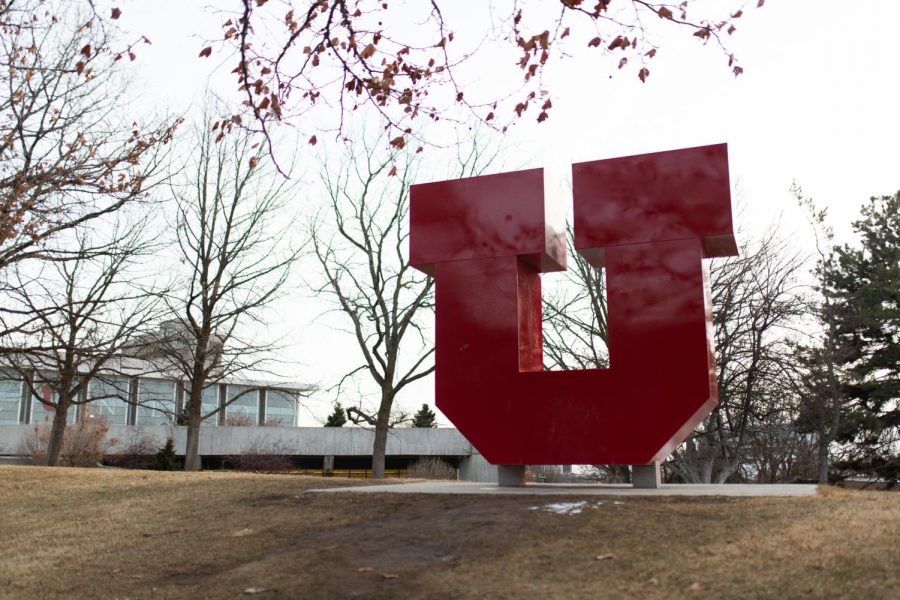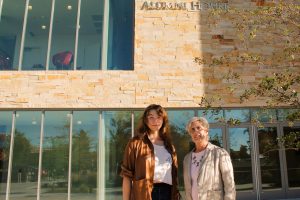U President Randall Joins Excelencia in Education to Support Latinx Students
Evening on University of Utah campus, Thursday in Salt Lake City. (Photo by Maya Fraser | The Daily Utah Chronicle)
October 11, 2022
Recently, President Taylor Randall of University of Utah joined the Excelencia in Education Presidents for Latino Student Success Network.
Excelencia in Education is designed to help Latinx students succeed in higher education by helping advance practices in higher education institutions and by conducting research to create new education policies. The organization’s presidents network is made of university presidents who are committed to making their institutions a place where Latinx students thrive.
Melissa Pardo-Choza, a junior at the U studying urban ecology and the vice president of the Latinx Student Union, said this decision by President Randall is a very important recognition for the Latinx community at the U.
“I think it’s really important for public figures to enter non-white spaces because in the past, we have been marginalized or we just haven’t been paid enough attention to,” Pardo-Choza said. “It’s really important when someone does want to invest in our community.”
Joining Excelencia in Education is also going to help first-generation Latinx students at the U acquire the skills they need for their careers after college that they couldn’t obtain elsewhere, Pardo-Choza said.
“My parents, because they were immigrants, were not able to give me the skills that I needed because they were too busy building a life for me and my siblings, and I think that’s a pretty common thing among other Latinx students,” Pardo-Choza said. “We’re usually first generation and we need that kind of support to get ahead in life.”
More than 44% of Hispanic students are the first in their family to attend higher education, and Latinx students are more likely to be first generation college students overall, according to NBC.
According to Dr. Theresa Martinez, associate professor of sociology, Excelencia in Education is going to take steps at the U to retain Latinx students in college and help more graduate.
“The proof is in the pudding,” Martinez said. “How many of our Latinx students are starting, ending and completing, not just enrolled, but completing to graduation? That’s what Excelencia is really about. It’s a very positive step.”
It’s Just the Beginning
According to Martinez, joining Excelencia in Education is just one of the first steps to doing more for the Latinx community at the U.
“For the University of Utah president to join an organization like Excelencia is an acknowledgment that we need to be doing more to create more of a pipeline for support,” Martinez said.
One way the U can continue to help Latinx students is to understand their background and adjust the cost of college to support the Latinx community, Martinez said.
“One of the ways that they could do it is to help make the college more affordable,” Martinez said. “A lot of our students are coming from working class homes where parents are working two or three jobs. Past disenfranchisement has made it more difficult for families to send their children to school.”
According to Martinez, there are also only a small amount of resources for the Latinx community on campus and the U should expand these resources in order to help retain Latinx students.
“I was thrilled to see the Black Cultural Center and I’m wondering, shouldn’t we have a Latinx Cultural Center on campus?” Martinez said. “The vast majority of students of color on campus are Latino students.”
A Lack of Representation
Yvette Coronado, assistant professor and field faculty liaison in the College of Social Work, said Latinx students are not properly represented at the U by faculty or in curriculum.
“When we look at the curriculum, we look at whose books are required reading, whose stories are being told or being centered in classroom discussions, that’s largely influenced by who’s teaching,” Coronado said. “Our faculty numbers are not representative of the number of the demographic percentages in the community.”
Latinx students also face hardships outside the classroom, and the U should be making investments to help these students outside of just education, said Coronado.
“If we’re looking at where Latinos live, it’s predominantly on the west side and campus is on the east side,” Coronado said. “There is literally a financial and logistical piece that they have to navigate, like the time spent getting to and from and the money spent getting to and from.”
According to Pardo-Choza, not only do Latinx students face financial and representation barriers, but social and discrimination challenges on campus are also very prevalent.
“A lot of us don’t feel like we could join the community on campus,” Pardo-Choza said. “Because of the language used surrounding minorities, we’re not really seen as humans to a lot of students.”
While fighting these issues on and off campus, Martinez said it is important for the U to show the Latinx community they are valued and supported by the institution and its faculty.
“We need to be the kind of institution that supports our students, believes in them, supports them all the way through from enrollment to completion,” Martinez said. “We need to remind ourselves that we are lucky to have them and that we are privileged to have them here.”













